
The cost of stone steps can vary considerably depending on the material you choose and how much labor is required. This guide shows you the cost of popular stone steps and all the extra fees you need to consider when tackling this project.
Don’t hold back when it comes to these useful landscaping features


If you’re looking to build on hilly land, add landscaping to a slope, or prevent soil erosion, a retaining wall might be just what you need. Retaining walls are structures built into sloped surfaces to stabilize the ground, resist pressure that could cause soil shifting or erosion, and make it possible to build on uneven terrain.
Retaining walls can be built in a variety of styles and from a wide range of materials, and different types of retaining walls are used for different purposes. Learn about seven common types of retaining walls and which is best for your yard.
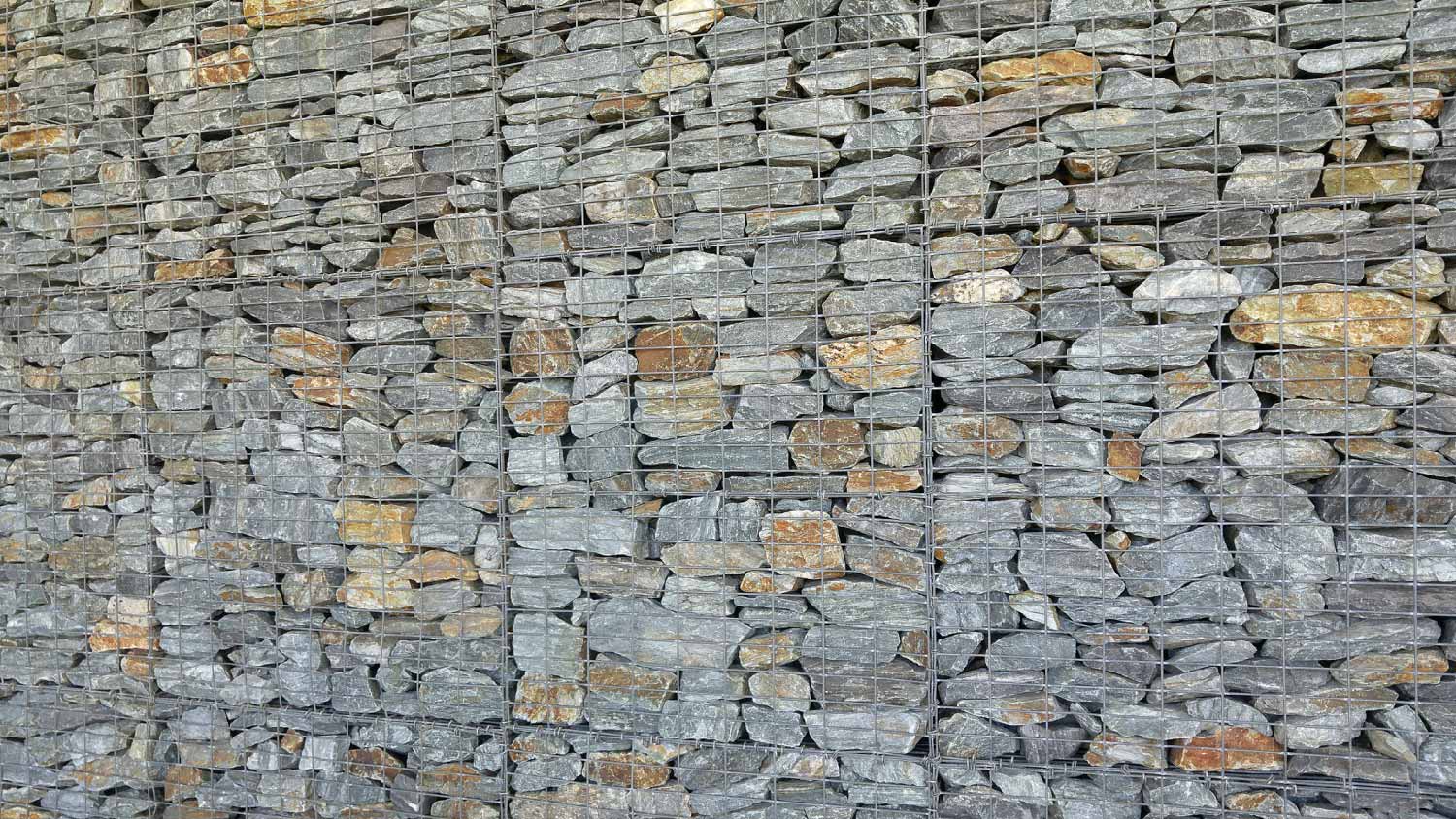
Gravity retaining walls use their own weight and the force of gravity to resist pressure. Unlike other types of retaining walls, they don’t require additional support. Gravity walls can be constructed of various materials and are known for their stability and strength.
Walls up to 10 feet high
Creating tiered gardens
Preventing erosion on waterfront properties
Concrete blocks
Precast concrete
Stone

Sheet pile retaining walls use interlocking sheets of material driven into the ground to create a continuous barrier against pressure. Modern sheet pile walls typically use steel to prevent rot and decay, but they can also be constructed from wood. This is one of the most cost-efficient types of retaining wall and is faster to construct than other types.
Temporary retention during excavation
Areas with too little space for thicker walls
Soft, loose, or high-moisture soil
Steel
Wood
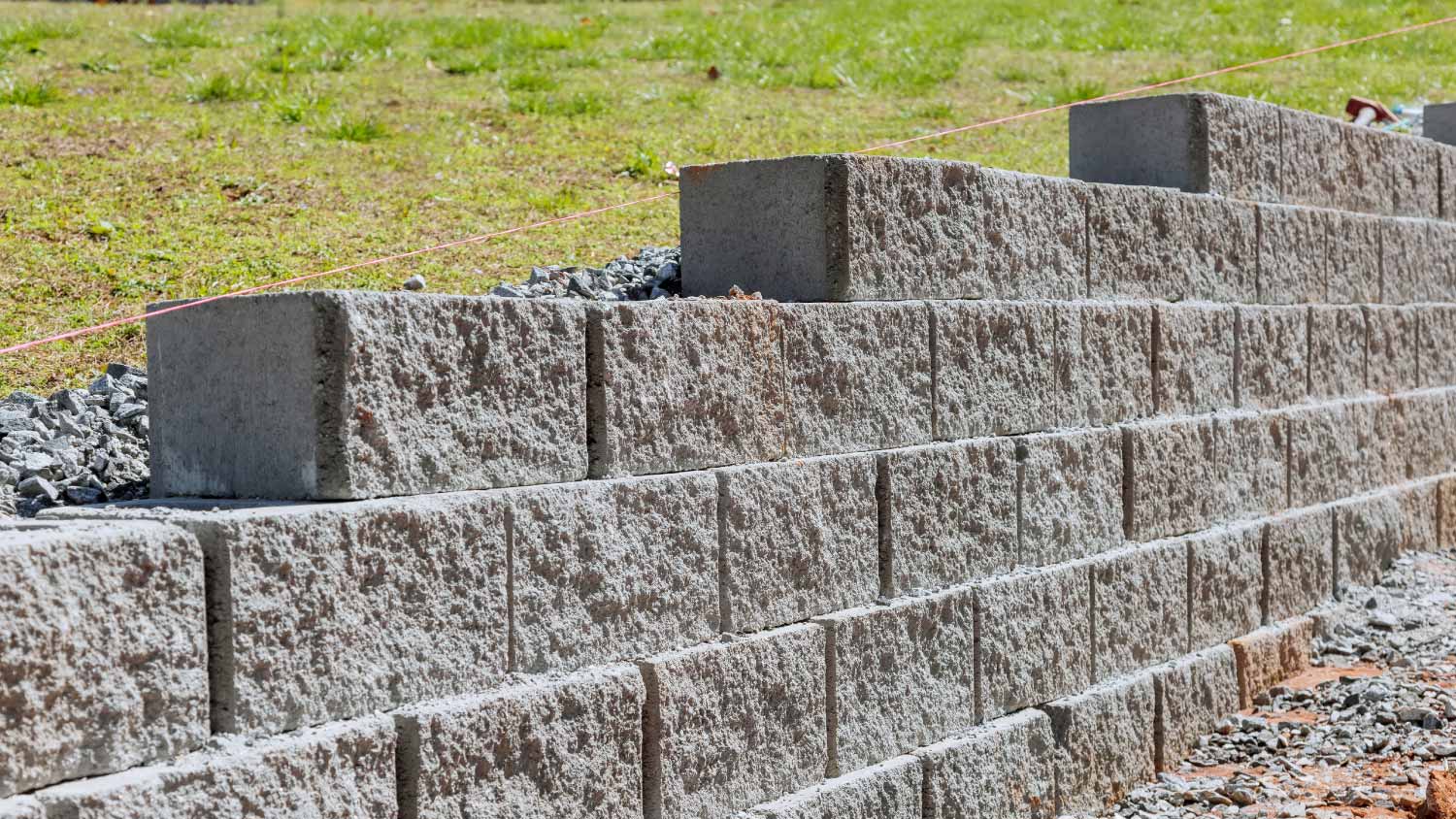
Cantilever retaining walls have a vertical structure and a horizontal base, forming an L-shaped structure. They are the most common type of retaining wall, use less material than gravity walls, and are popular due to their suitability for taller walls and ability to withstand significant amounts of pressure.
Walls 10 to 25 feet high
Ground with significant elevation changes
Reinforced concrete
Reinforced masonry

Anchored retaining walls are relatively thin walls reinforced with anchors made of high-strength steel bars or cables driven deep into the ground for additional support. The tension from the anchors helps counteract pressure exerted against the wail. These retaining walls cost less than thicker walls and are ideal in tight spaces like urban yards.
Areas with limited space
Walls up to 18 feet high
Areas prone to landslides
Stone
Concrete
Steel anchors
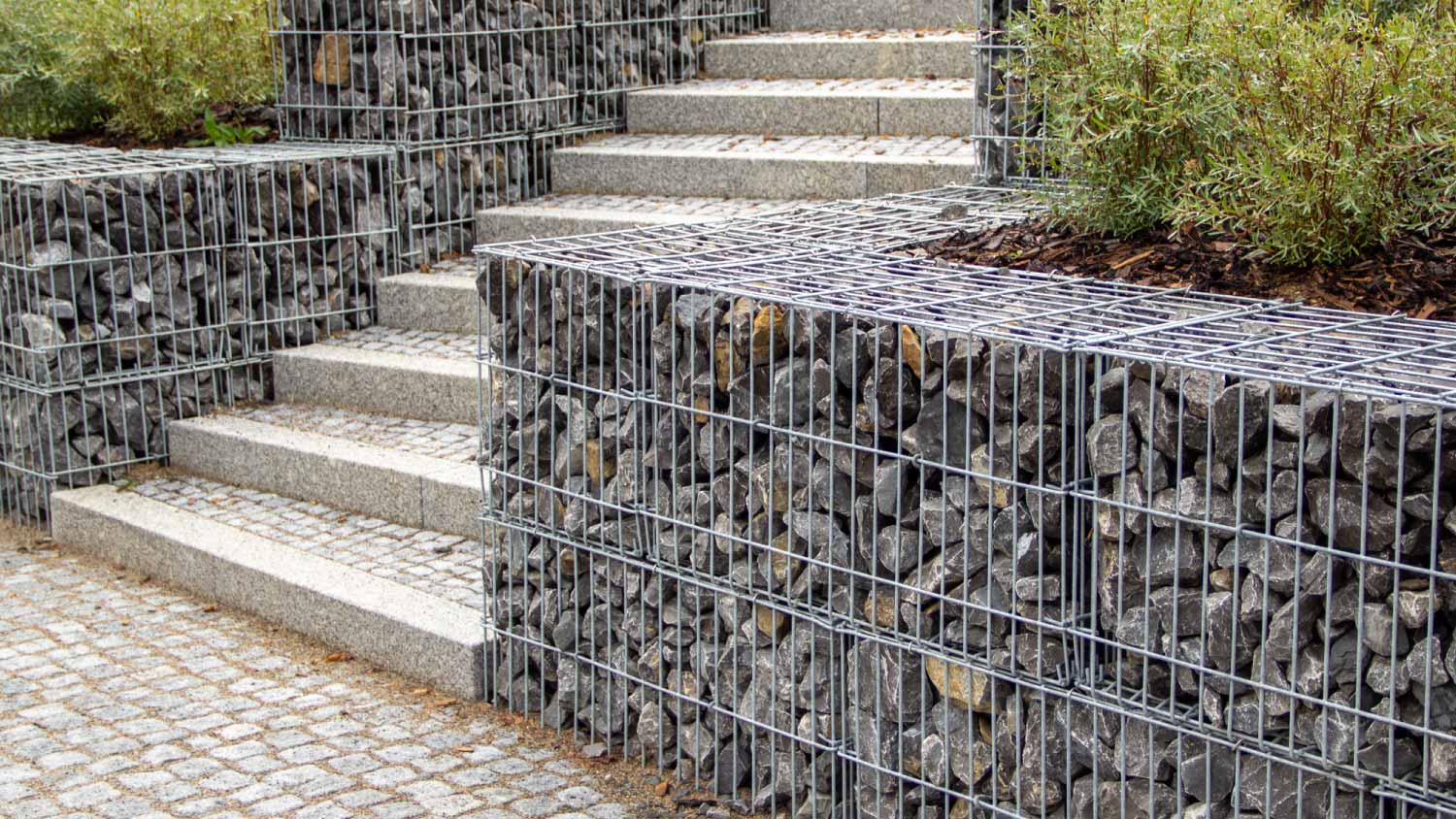
Gabion retaining walls are constructed from wire mesh baskets or boxes filled with stone or rocks stacked and linked to give the wall its form. This type of retaining wall has been used since ancient Egypt and is popular due to its permeability, ease of construction, and affordability.
Tiered gardens
Seating on a slope
Waterfront property
Galvanized wire mesh baskets
Rocks
Stone
Bricks
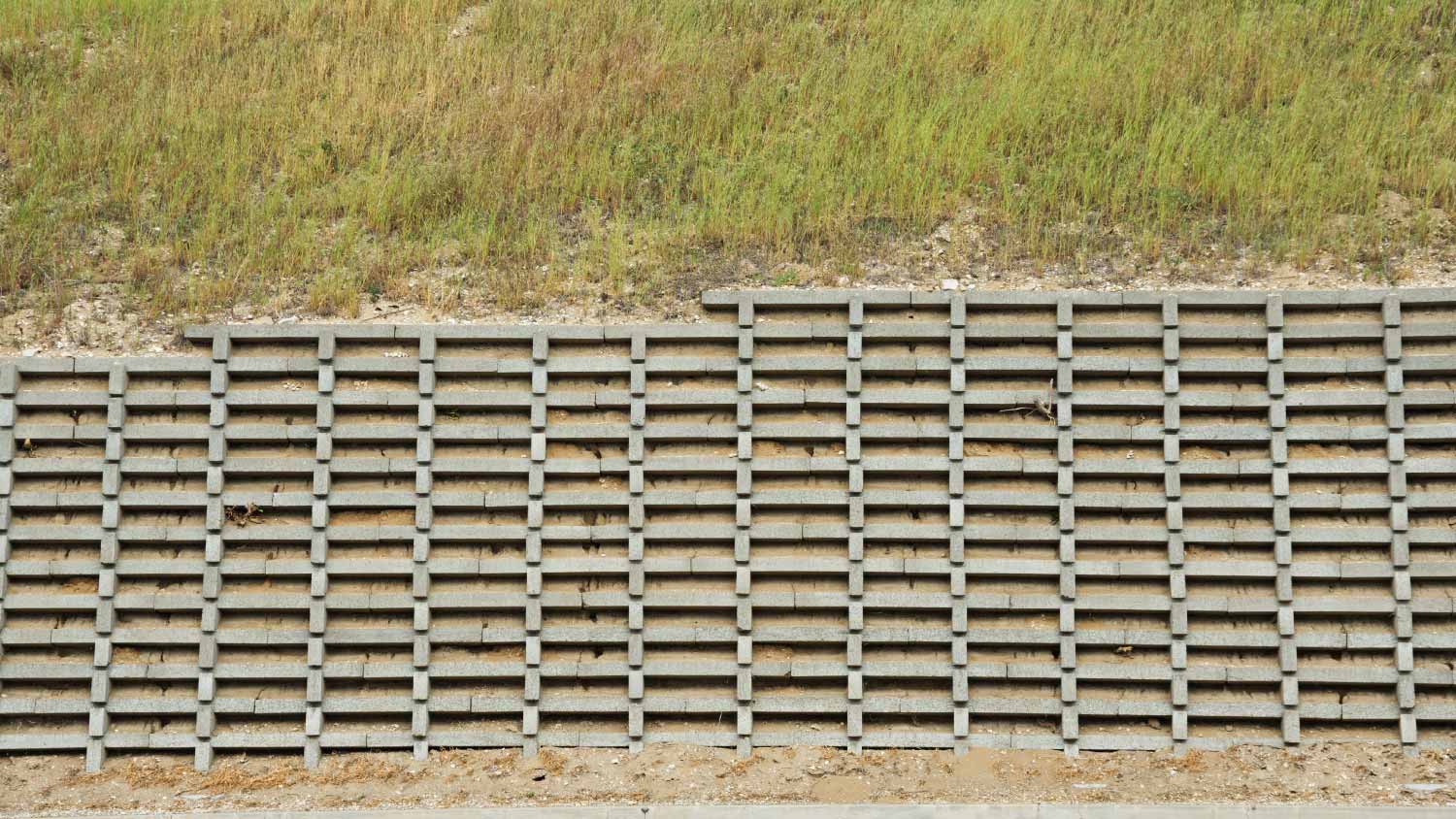
Crib retaining walls use interlocking, pre-constructed wood or concrete boxes filled with materials like stone or soil. These walls are permeable and allow for efficient drainage, making them ideal for areas where water pressure is a concern. Unlike other retaining walls that are perfectly vertical, crib walls are often built at a slope.
Driveway retention
Terraced gardens
Areas with steep slopes
Treated timber
Concrete
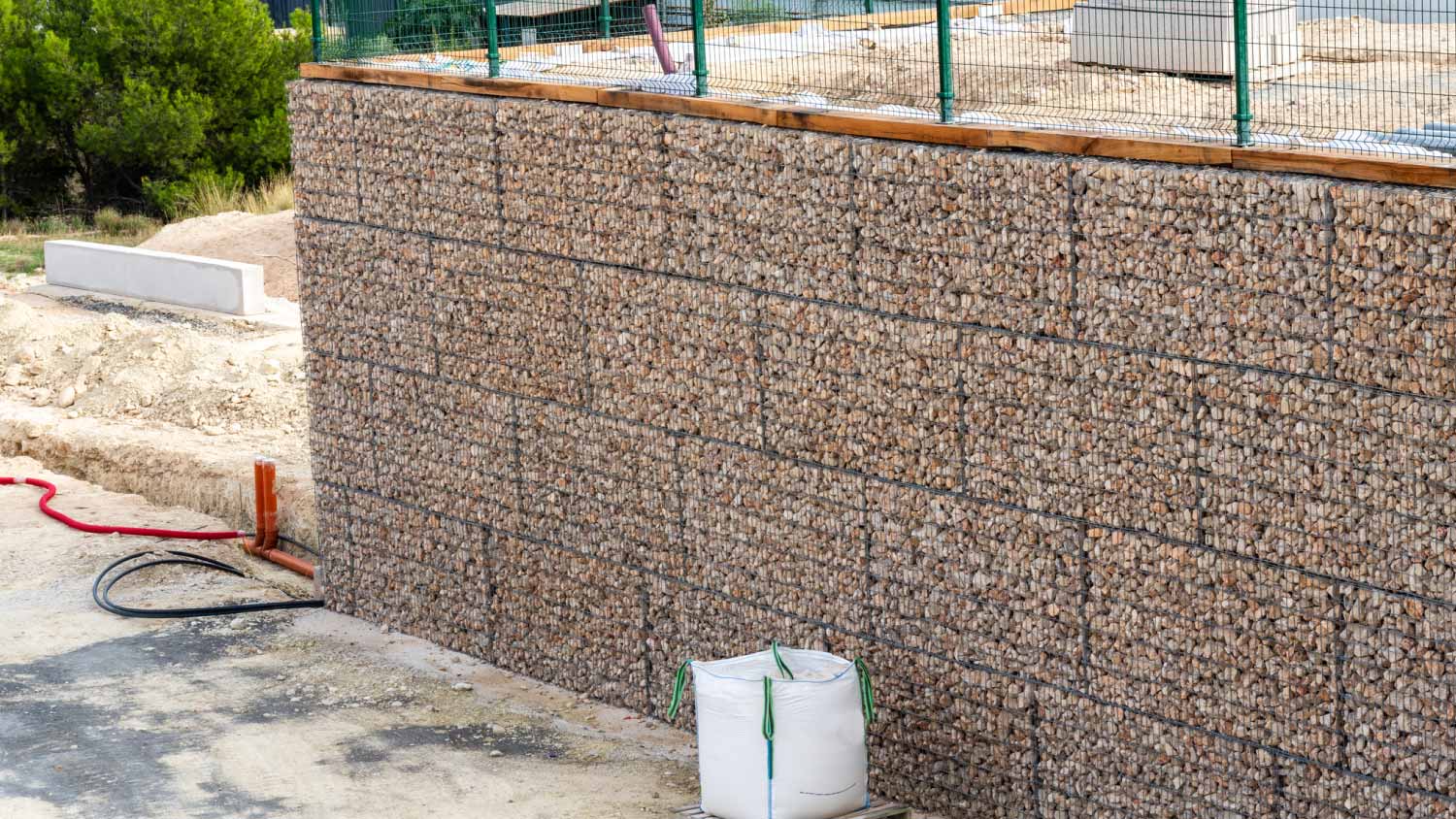
Mechanically stabilized earth (MSE) walls use layers of backfill reinforced with metal or plastic strips or mesh for stability, and materials like stone, wire mesh, or concrete to make up the wall face. These walls are versatile and cost effective but may require more frequent maintenance than other retaining walls.
Tall or long walls
Driveway support
High-traffic areas
Backfill: Dirt, sand, gravel
Reinforcement: Steel, geosynthetic plastic
Facing: Concrete, stone, wire mesh
The right retaining wall for your yard will depend on a number of factors, including:
The angle of the slope
The desired wall height
The wall’s function
Available space
Soil conditions
Your landscape, environment, and desired aesthetic will inform the type of hardscaping material you need. For example, stone pavers are ideal for temperate climates. If you're not sure what material is right for you, consult with a landscaping professional.
A local hardscape contractor can help you decide on the right style and material for your retaining wall. When hiring a hardscape contractor, find out how much experience they have with your desired wall style, see whether they’ll pull any necessary permits and follow local building codes, and ask for pictures or reviews of their previous work.
Very professional, polite and helpful. I would recommend him!
Raven and crew does absolutely fantastic job. They are very professional if any concerns were to occur with any of her work she always took responsibility and finished out with a great job. I have worked with her business for a year and have always been satisfied. Very trusted business and...
I had Ace Fireplace Services install custom chimney caps for my home, and the results are stunning. They fit like a glove and have added a touch of sophistication to my chimney. I can't recommend their services enough.
Precision and professionalism define Custom Paint Jobs LLC. We couldnt be happier.
Very professional and efficient with work. Answered each question I had with great knowledge and an informative response. Will be working with them again.
Window Depot did an amazing job on my deck. I wasnt sure what I wanted to do, but their composite decking was affordable and will last a long time. I am excited to have family over, and I am no longer embarrassed by my backyard. Jeff and the ground crew were polite, respectful, and caring for...
Great tree company, very professional and honest. Glad we found them, they had the best pricing
Maple Tree Service should serve as a mentor for other business! Customer service was superior and beyond expectation. Response to request was prompt. The representative was very courteous and proud of the company. Quote was given during initial visit and work date established. A follow up...
Eugene returned my call within minutes and was able to complete the job within a couple of days. Friendly and professional, and I feel his prices are reasonable.
We used Unique Hardwood Floor LLC three years ago to work on the floors of a 70 year old home that needed a great deal of work. Some floors needed repairs, some were replaced and others just needed to be refinished. It was a complicated job as they needed to blend the old and the new to...
From average costs to expert advice, get all the answers you need to get your job done.

The cost of stone steps can vary considerably depending on the material you choose and how much labor is required. This guide shows you the cost of popular stone steps and all the extra fees you need to consider when tackling this project.
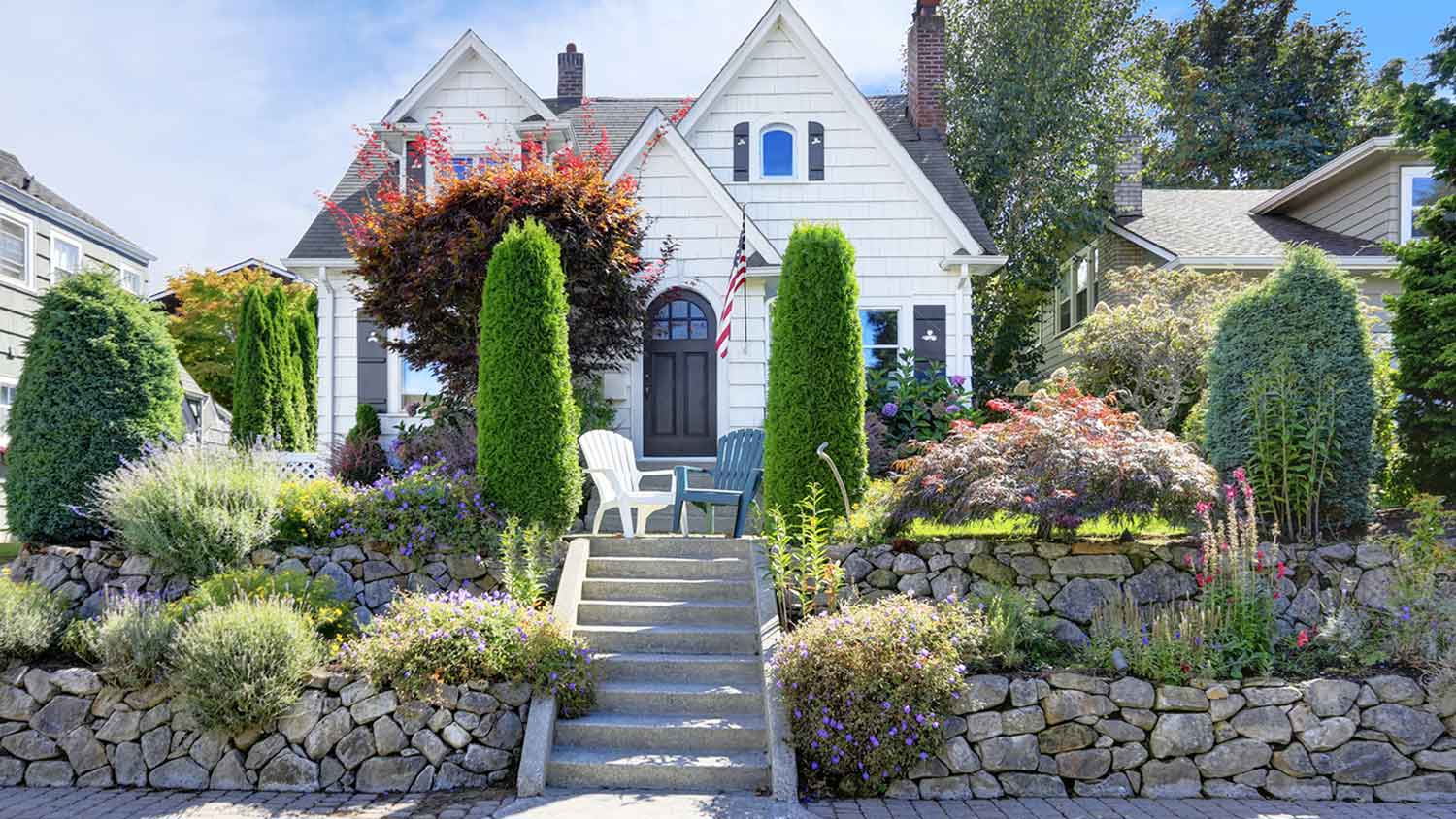
Retaining wall repair cost can vary widely based on the age and condition of the wall being restored. Learn why finding the right pro is important for getting the job done.

Porcelain pavers are a high-end option for your home’s hardscaping that can completely transform your outdoor space. Here’s how much porcelain pavers cost.

Use this calculator to determine how much paver base you need to successfully complete your paver project and enjoy your patio for years to come.

There's no need to cover up your entire lawn to install a driveway or walkway. Grass paver blocks offer a natural alternative to stone and concrete.

Have you noticed your pavers sinking or would you like to forget about the stains on your driveway? Here are common paver problems and what to do about them.